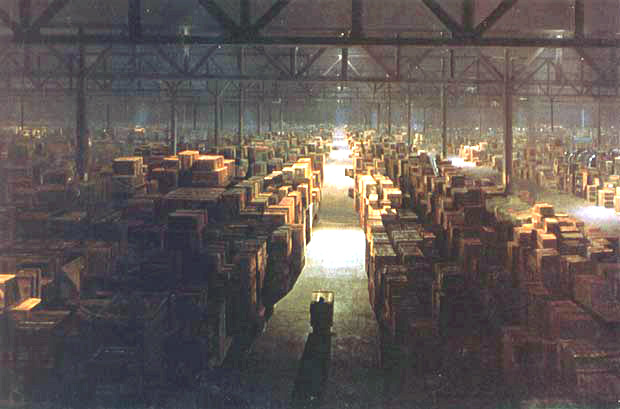 When thinking about archives, the tendancy is to summon images of dark and dank vaults, huge underground warehouses filled with shelves with box upon box upon box. Perhaps the X-Files’ Cigarette Smoking Man is lurking somewhere in shadows, or the Ark of the Covenant hidden away in a pile of crates.
When thinking about archives, the tendancy is to summon images of dark and dank vaults, huge underground warehouses filled with shelves with box upon box upon box. Perhaps the X-Files’ Cigarette Smoking Man is lurking somewhere in shadows, or the Ark of the Covenant hidden away in a pile of crates.
And when one talk of “rescuing” films from archives, again, the thought seems to be that the films are simply thrown down at random on any old shelf, allowed to gather cobwebs and dust, and that they desperately need to be saved from this cold holding cell where only deterioration and destruction await.
At TIME/IMAGE we work closely with the team at the BFI archives. If there’s one thing that can be said, it’s that the films they hold there are preserved with utmost care and respect (they are, after all, in the process of moving to a new sub-zero storage facility).
The truth is, what we should really be talking about is provided access rather than a rescue mission. Archives are about preserving. It used to be that to preserve meant to store away from daylight and prying, sweaty, acidic finger tips. It also meant that certain doors were closed to the public.
Now, in the 21st century, the process of digitisation can allow both preservation AND access. You no longer have to book appointments, travel far and wide to seek the protected book or sound recording or film. With digitisation and the open sourcing of these resources through the internet we can ensure the survival of these important historical documents and allow them to be used by the public.
We’re not “rescuing” them from a bad carehome; we’re allowing the care to continue, whilst opening doors. Why preserve for the public if they can’t use it? Digitisation provides both access and preservation.
Now, which box did we put that ark in?
SAM
